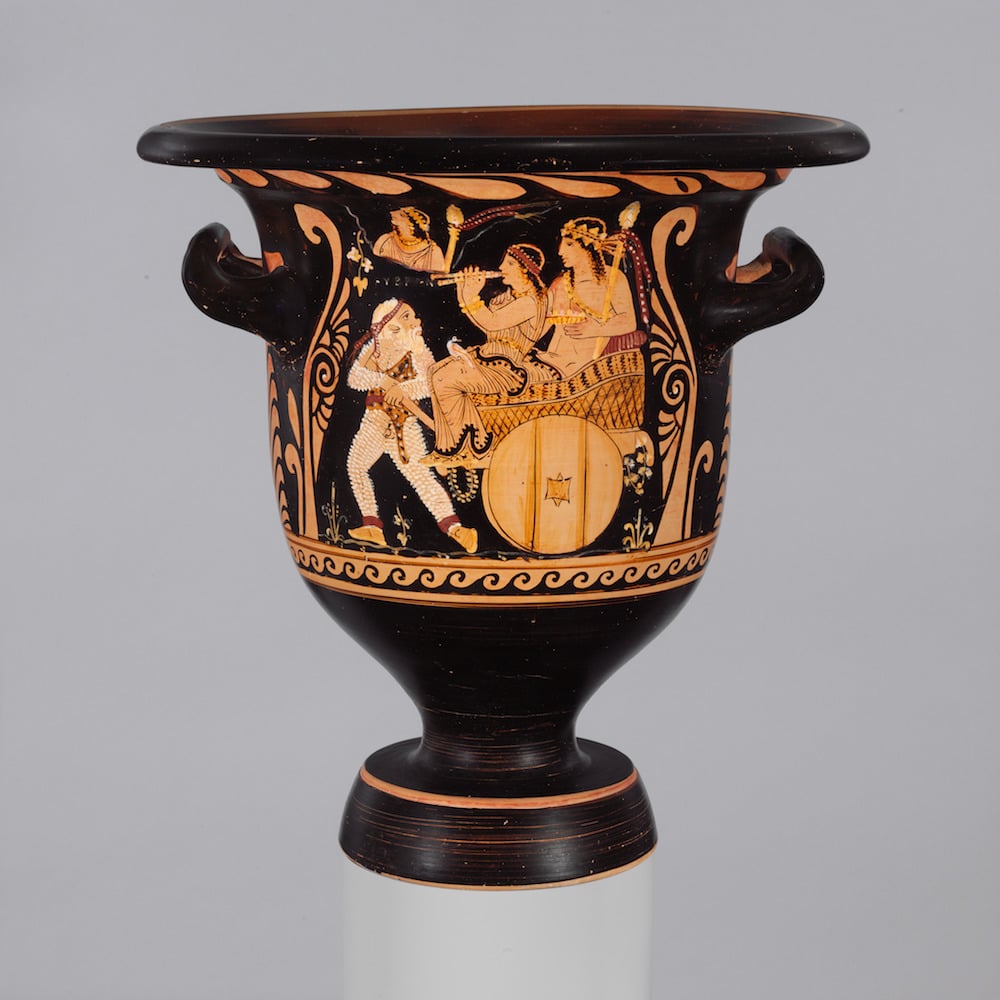Law & Politics
Another Hot Pot? The Met Surrenders an Ancient Greek Vase to the Authorities for Investigation
The DA believes the work was looted from Italy decades ago.

The DA believes the work was looted from Italy decades ago.

The Manhattan district attorney’s office recently ordered the Metropolitan Museum of Art to surrender an ancient vase that it believes was looted from Italy decades ago.
The vase, which until recently was on display in the museum’s Greek and Roman galleries, is now sitting in the DA’s evidence room in New York City, according to a detailed report by Tom Mashberg in the New York Times. He writes that authorities “quietly seized the antiquity last week based on evidence that it had been looted by tomb raiders in Italy in the 1970s.”
The Times published a copy of the DA’s warrant issued on July 24, in which the Department of Homeland Security states that there is “reasonable cause” to believe that the vase was stolen. The vase, which depicts Dionysus riding a cart, is from 360 B.C. and is attributed to the Greek artist Python.
The museum said it hand-delivered the vase to authorities the day after the warrant was issued and believes it will be returned to Italy. Met spokesman Kenneth Weine said in a statement that the museum “has worked diligently to ensure a just resolution of this matter.”
Weine said in an email to artnet News: “Upon the publication in 2014 of an image of the piece, the Museum began reaching out to the Italian Ministry of Culture—which is in keeping with prior agreements we have with the Italian government. When the Manhattan DA contacted The Met in recent months, we immediately took the piece off display, and last week delivered it to the prosecutor’s office.”
The Times reports that forensic archaeologist Christos Tsirogiannis first published his findings about the so-called Python vase on art crime blog ARCA in 2014, but complained he never heard back from the museum after contacting them with his evidence. (The Met told the Times they were not ignoring the issue, but instead waiting for guidance from the Italian Culture Ministry. The museum says it reached out to Italy informally after the images surfaced and then sent a formal request in 2016.)
Nevertheless, Tsirogiannis says he eventually grew frustrated and reportedly sent his evidence to Manhattan prosecutor Matthew Bogdanos last spring. The dossier included Polaroid photos shot between 1972 and 1995 that Tsirogiannis said showed the same vase now in the Met’s collection encrusted with dirt.
“When I sent American police the information, they immediately told me that this was ‘a great case.’ It was abundantly clear that this rare object had been stolen,” Tsirogiannis said.
The Times notes that the details are similar to those surrounding another major work formerly in the Met’s collection, the Euphronios Krater, a terra cotta wine vessel removed from the museum in 2008 in light of evidence that it had been illegally excavated from an ancient Italian burial ground.
Officials believe that both the Krater and the Python vase passed through the hands of Giacomo Medici, an elderly Italian dealer who was arrested in 1997 and convicted of conspiring to traffic in antiquities in 2004. Medici has denied any involvement with the Python vase.
The Met acquired the vase at Sotheby’s in 1989 for $90,000. A Sotheby’s spokesperson told the paper it could not identify the consignor because of client confidentiality rules and said the auction house was not aware of any provenance issues at the time it handled the sale.
The district attorney’s office declined to comment.